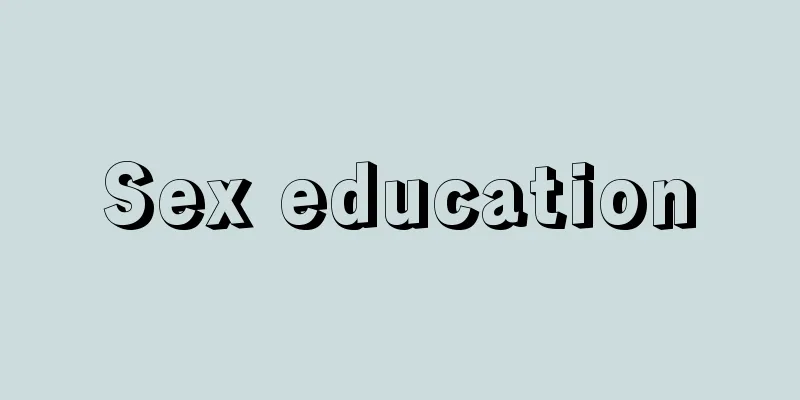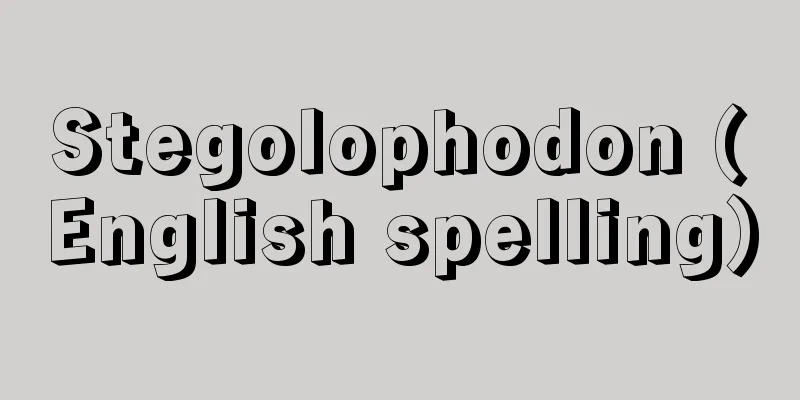Sex education

|
This term has been widely used since the beginning of the 1970s and refers to education on "human sexuality" in a broad sense. It has come to replace the term chastity education, which was used for a period after the Second World War. Sexuality education is often thought of in the narrow sense as education on menarche (first menstruation), sexual familiarity, secondary sexual characteristics, and the transmission of sexual knowledge such as prevention of sexually transmitted diseases, but these are only part of it. "Human sexuality" is a basic condition that is built into the core of a person's personality. In other words, the fact that a person is male or female and their awareness of it are factors that bring about differences in various things, such as their outlook on life, thoughts, actions, social and professional activities, choice of friends, clothing, and attitudes. In other words, it even determines the way a person lives their entire life. Moreover, conditioning regarding "an individual's sexuality" is brought about by various human relationships in the family, school, and society during the process of growth from infancy to adulthood. Sexuality education is therefore not simply an education on physiology and anatomy, but is an education based on a broad concept that includes human contact, such as the psychological and sociological aspects of human relationships and the background to their upbringing, in other words, education on "human sexuality." This concept of sexuality was proposed by Mary Steichen Calderone (1904-1998), founder of the Sexual Information and Education Council of America (SIECUS), which was established in 1964, and Lester Allen Kirkendall (1904-1991), and is the foundation of modern sexuality education. It is summarized in the expression, "While sex is something between the legs, sexuality is something between the ears." In other words, sex education had previously tended to be understood as education about the genitals, sexual intercourse, and the associated reproduction, but human sexuality seeks to understand it as "what is between the ears," that is, human sexuality related to the brain, and as a way of being and living as a sexual being throughout one's entire life. This includes not only heterosexual sex, which accompanies reproduction, but also sex as pleasure, sex for infants and young children, sex during adolescence, sex for the elderly, sex for the disabled, masturbation, and everything else related to human sexuality. [Takeshi Mamiya and Yukihiro Murase] The history of sex education in JapanThe term "sex education" was first used in Japan during the Taisho period. Biologist Yamamoto Senji advocated the need for "purely scientific sex education," gave a lecture entitled "Life Biology" at the preparatory school of Doshisha University, and published "Sex Education" in 1923 (Taisho 12). This was born out of a desire to prevent social tragedies caused by sexual ignorance from the standpoint of sex science, and with the cooperation of Yasuda Tokutarou, Yamamoto also conducted the first survey of the sex lives of young people in Japan. Yamamoto's ideas on sex education were comparable to modern sex education that incorporates Western ideas, but at the time they were strongly criticized by the academic community and were not accepted. In addition to Yamamoto, Hoshino Tetsuo of Kanazawa Medical University and obstetrician-gynecologist Ota Tenrei also tried to advocate sex education and sex science, but the seeds of their ideas never took root under the circumstances of the time. Around 1923, the momentum of Taisho democracy led to calls for free love, and in response to the liberal trend that had taken hold among young people, a movement to emphasize sexual purity was born. For example, women's educator Ichikawa Genzo advocated the need for chastity education, serializing his own theories in Fujin Koron, while at the same time trying to put it into practice in the classroom as the principal of Oyu Gakuen Girls' High School. The Women's Christian Temperance Union of Japan also published Proper Sex Education by Genevieve Davis Olds (1874-1939). Both of these aims were to protect young women from the temptations of free love and to raise chaste women who would maintain the order of monogamy. These trends left an impact after World War II in the form of the promotion of sexual morality and the emphasis on sexual purity. One such example was the notice "On the implementation of chastity education" issued in 1947 (Showa 22) under the name of the Director-General of the Social Education Bureau of the Ministry of Education. The following year, the "Chastity Education Committee" was established, and thereafter "chastity education" became a widely used term in social and school education. In school education, the 1947 "Guidelines for the Implementation of Secondary School Health Plans" (draft by the Ministry of Education's Health and Physical Education Bureau) set out "reaching maturity," and sexuality instruction began to focus on physiological aspects. In the midst of this, prefectural and city boards of education actively produced teaching materials and designated experimental schools for research, leading to the founding of the "National Chastity Education Research Conference" (1965) and the "Kansai Chastity Education Research Association" (1966) in Utsunomiya, Tochigi Prefecture. However, with the revision of the curriculum guidelines in 1958 and 1969, the content of sexuality instruction in schools tended to be dispersed and eliminated. Thus, around 1970, "chastity education" came to be called "sex education," but this hardly bore fruit in school education. The rapid social and economic changes during the high economic growth period produced social phenomena similar to those in Western countries in many ways, and the field of sexuality was no exception, causing a rapid change in sexual awareness and a trend toward younger people engaging in sexual activity. In response to this situation, in 1972, the Japan Sex Education Association was established with the approval of the Minister of Education as the first sexuality education awareness organization with legal status in Japan. In 1974, the Japan Sex Education Association began a nationwide survey of sexual behavior among young people, commissioned by the Prime Minister's Office Youth Affairs Headquarters (the Association conducted its own surveys from the following year), and played the role of a sexuality education center in Japan by collecting domestic and international sexuality education materials, regularly holding sexuality education research conferences, and publishing information magazines on sexuality education. From these activities, the National Council of Sex Education Research Organizations was formed in 1981 to further stimulate research and practice in sexuality education, and efforts were focused on the dissemination of sexuality education. Furthermore, in 1982, a private sex education research organization, the "Human and Sexuality Education Research Council," was established, which, while keeping an eye on the changes of the times, began to pursue the practice of sex education that was rooted in the realities of children. [Takeshi Mamiya and Yukihiro Murase] Sex education in schoolsSex education in schools, in line with the philosophy of school education outlined in Article 1 of the Fundamental Law of Education, can be described as "education that aims to teach scientific knowledge and social rules about sex in accordance with the developmental process of infants, children and students, while at the same time deepening individual awareness of sex, cultivating rich emotions and healthy attitudes, and perfecting social personality." Although sex education in schools must be taught primarily in the classroom as part of the curriculum, and through individual instruction for individual children and students, the current curriculum guidelines do not clearly position sex education, and unfortunately one has to say that the content of sex education currently taught in schools lacks relevance and systematicity. At present, there are roughly three teaching methods for providing sex education in schools. One is to create a sex education curriculum and teach systematically (special type). The other is to take advantage of opportunities such as each subject, ethics (elementary and junior high school), special activities, and school events to provide timely and appropriate instruction on sex (opportunistic type). The other is to set up special units for content that is considered particularly necessary, while following the principle of opportunistic instruction (additional type). Nationwide, elementary schools tend to use the additional type, which includes guidance on girls' first menstruation and cooperation between men and women, while junior high schools tend to use the opportunity type. There are only a few special types, but they are increasing slightly. In high schools, there are many one-off lessons by visiting lecturers on unwanted pregnancies and prevention of sexually transmitted diseases, as well as opportunity lessons in health, biology, social studies, etc. In the midst of this, a major revision of the curriculum guidelines was made in 1992, and sexuality-related content was included in health studies at elementary schools, and was also included in textbooks. This came as a major shock to schools, where sexuality education had tended to be left to school nurses. This triggered a phenomenon that could be called a "sexuality education boom," which caused great confusion in schools, and forced them to respond. This was a valuable opportunity for the first time that human sexuality was discussed as an educational initiative, and as a result, the idea that sexuality education should be positioned as a field of school education became more and more established. However, since there was no clear time frame set in the curriculum and it was left up to each school, and because there were many other educational issues piling up, it is difficult to say that many schools are making a solid effort in this area. [Takeshi Mamiya and Yukihiro Murase] Area/ContentSexuality education includes biological and humanistic aspects, and spans three areas: sexual physiology, sexual psychology, and sexual society. The "sexual physiology" content includes the changes in physical growth of men and women, differences between men and women's bodies and secondary sexual characteristics, menstruation and ejaculation, fertilization, pregnancy, childbirth, childcare, sexually transmitted diseases such as AIDS, and contraception. The "sexual psychology" content includes sex consciousness and gender, the characteristics and individuality of sexual desire and sexual behavior of men and women, the development of heterosexual consciousness, cooperation between men and women, relationships between men and women, sexual worries and anxieties, and various sexualities such as homosexuality. The "sexual society" content includes gender equality, the roles of men and women in the family and society, how to respond to sexual culture and information, marriage and family, family planning and population issues, sexual perpetration and sexual victimization, and social issues related to sex (sexual violence, divorce, single life, abortion, in vitro fertilization, prostitution, etc.). It is desirable to provide the above content to infants, children, and adolescents, carefully selecting the content, level, and method taking into account their developmental stage and level of understanding. It will also be important that these educational opportunities are not limited to schools, but are actively positioned as part of social education as well. [Takeshi Mamiya and Yukihiro Murase] Current Issues and OutlookThe challenge of sex education in today's world, where values are diversifying, is to foster the ability of each individual to choose their own way of life and make sexual decisions. Sexuality is a human right that belongs to each individual, and it should not be controlled or dominated by anyone. When, how, and with whom a person engages in sexual activity is a matter of exercising that person's right to self-determination. The original role of sex education can be considered to be to help people exercise that right in a more appropriate way and to foster their ability to make decisions for themselves. When we consider sexuality as an individual's unique human right, we are first faced with the issue of diversity in gender, sexual orientation, and so on. It must be noted that at the end of the 20th century, the light of human rights and science was shed on this sexual diversity, and the way it was treated changed significantly. One of these changes was that homosexuality was removed from the list of mental disorders (the term "homosexuality" was removed from the American Psychiatric Association's handbook on mental disorders in 1987, and from the World Health Organization's classification of diseases in 1993), and it was accepted as a sexual orientation. As a result, some countries have begun to legally recognize same-sex partners. In addition, for people with so-called gender identity disorder, whose genital sex does not match their own gender identity, sex reassignment surgery to reassign their gender has been approved in Japan after certain procedures, diagnosis, and treatment. These changes are likely forcing a major change in the way sex education is conducted. Furthermore, with regard to relationships between the sexes, the Convention on the Elimination of All Forms of Discrimination against Women (1979), which was adopted by the United Nations General Assembly, came into force in Japan in 1985, and the United Nations Declaration on the Elimination of Violence against Women (1993) was a major turning point that led to the start of a fundamental review of relations between the sexes, including consideration of legal measures. In Japan, the Equal Employment Opportunity Law was enacted (1985) and revised (1997), and the Basic Law for a Gender-Equal Society was enacted (1999), which led to a reexamination of the fixed gender role division. In schools, so-called gender-free education (a way of thinking that is not bound by social and cultural gender) has been promoted, such as coeducation of home economics, promotion of mixed-gender rosters, and teaching that does not impose the framework of "masculinity" and "femininity". Today, it is clear that young people are becoming more sexually active, but behind the scenes, various sexually transmitted diseases and an increase in induced abortions due to unwanted pregnancies are worrying issues. In addition, concerns about the spread of HIV infection must be said to be a truly human issue. As we enter this historic turning point regarding sex and gender, the challenges for school education and sex education are becoming more numerous and greater. There are many urgent issues, such as formulating teaching plans, securing teaching time, and training instructors, but unfortunately, the current situation is that such efforts are lagging behind. [Murase Yukihiro] "Sex Education" by Shinichi Asayama (1967, Chuokoron-Shinsha)" ▽ "Introduction to Sex Education" by Hiroo Muramatsu and Kazuhiko Okamoto (1977, Shinjuku Shobo)" ▽ "Signs of Sex" by John Money and Patricia Tucker, translated by Shinichi Asayama (1979, Jinbun Shoin)" ▽ "The Psychology of Sex Differences" by Takeshi Mamiya (1979, Kaneko Shobo)" ▽ "Revised Commentary on Sex Education Guidelines" edited by the Japan Sex Education Association (1984, Shogakukan)" ▽ "Lectures on Sex Education: What is Human Sexuality?" by Milton Diamond and Arno Kahlen, translated by Mayumi Tagusagawa (1984, Shogakukan)" ▽ "The Future of Sex and Sex Education in the 21st Century" by Yukihiro Murase (1998, Otsuki Shoten)" ▽ "New Sexology Notes, edited by Yukihiro Murase, new edition (1999, Togatsusha)" ▽ "A Book to Deepen Sex Education, written by Yukihiro Murase (1999, Togatsusha)" [References] | | | |Source: Shogakukan Encyclopedia Nipponica About Encyclopedia Nipponica Information | Legend |
|
1970年代の初めより普及、定着した用語で、広く「人間の性」に関する教育をさす。第二次世界大戦後の一時期に使われていた純潔教育ということばにかわるものとして用いられるようになった。初経(初潮)指導、精通指導、二次性徴、性感染症予防などの性知識の伝達といった、狭義の教育と考えられがちであるが、これらは性教育の一部をなすものにすぎない。「人間の性」は、その人のパーソナリティの中心的な部分に組み込まれている基本的条件である。すなわち、その人が男性であるか女性であるかという事実や、それに対する認識は、人生観や思考、行動、社会的・職業的活動、友人の選択、服装、態度などさまざまなものに差異をもたらす要因となっている。つまり、人間の生涯を通じての生き方そのものまで左右される。しかも、「一人の人間の性」に関する条件づけは、幼児から成人に至る成長の過程で、家庭や学校、社会におけるさまざまな人間関係によってもたらされるものである。 性教育とは、したがって、単に生理学的、解剖学的な教育のみでなく、人間関係における心理学的、社会学的な面や、その背景となる成育環境など、人間と人間の触れ合いを含む幅広い概念にたった教育、すなわち「人間の性」=ヒューマン・セクシュアリティhuman sexualityの教育である、ということになる。このセクシュアリティという概念は、1964年に設立された、「アメリカ性情報・教育評議会」(SIECUS)の創立者であるM・カルデローンMary Steichen Calderone(1904―1998)と、L・カーケンダールLester Allen Kirkendall(1904―1991)らによって提唱されたもので、現代の性教育の根幹をなすものである。それは「セックスsexが“両下肢の間にあるもの”であるのに対し、セクシュアリティは“両耳の間にあるもの”である」という表現に集約されている。つまり、それまで性教育sex educationというと、性器と性交、それに伴う生殖に関する教育ととらえられがちであったが、それを「両耳の間にあるもの」すなわち大脳にかかわる人間の性、性的存在としての人間の全生涯にわたるあり方・生き方としてとらえようというのが、ヒューマン・セクシュアリティである。これには、生殖を伴う異性間の性だけではなく、快楽としての性、乳幼児の性、思春期の性、老人の性、障害者の性、マスタベーションなど、人間の性にかかわるものすべてが含まれている。 [間宮 武・村瀬幸浩] わが国の性教育の歴史わが国で性教育という用語が用いられたのは大正期である。生物学者、山本宣治(せんじ)が、「純科学的性教育」の必要性を唱え、同志社大学予科で「人生生物学」と題する講義を行い、1923年(大正12)には『性教育』を出版している。これは性科学の立場から、性の無知に基因する社会的悲劇を防止しようという願いから発したもので、山本は安田徳太郎の協力を得て、わが国初の青年の性生活調査も行っている。山本の性教育の理念は、欧米の理念を取り入れた現代の性教育に匹敵するものであったが、当時は学界からも強い批判を受け、受け入れられなかった。山本のほかにも金沢医科大学の星野鐵男(てつお)や、産婦人科医の太田典礼(てんれい)が性教育や性科学の提唱を試みたが、当時の時代のもとで、その芽は育つことがなかった。 一方、1923年前後、大正デモクラシーの気運にのって自由恋愛が叫ばれ、自由主義的な風潮が若者たちの間に浸透してきたことに対処して、性の純潔を強調する動きが生まれてきた。たとえば女子教育家の市川源三は純潔教育の必要を説き、『婦人公論』に自説を連載するのと同時に、鴎友(おうゆう)学園高等女学校校長として自ら教壇で実践を試みた。また日本キリスト教婦人矯風会がオールズGenevieve Davis Olds(1874―1939)の『正しい性教育』を出版した。いずれも自由恋愛の誘惑から若い女性を守り、一夫一婦制の秩序を維持する貞淑な女性を育てる教育をねらいとするものであった。これらの流れは、第二次世界大戦後、性道徳の高揚や性の純潔性の強調という形でその影響を残した。1947年(昭和22)当時の文部省社会教育局長名の通達「純潔教育の実施について」がそれである。翌年「純潔教育委員会」が発足し、以後「純潔教育」は社会教育および学校教育における用語として普及していった。 学校教育においては、1947年の「中等学校保健計画実施要領」(文部省保健体育局試案)のなかで「成熟期への到達」が示され、生理面を中心とした性の指導が行われるようになった。こうしたなかで、都道府県教育委員会や市教育委員会の手によって、指導資料の作成や実験学校指定による研究が盛んに進められ、栃木県宇都宮市における「全国純潔教育研究集会」(1965)や「関西純潔教育研究会」(1966)の発足をみた。しかし、1958年、1969年と続く学習指導要領の改訂で、学校での性に関する指導内容は分散、削除の傾向をたどっていった。したがって、1970年前後には「純潔教育」から「性教育」へ言い換えられるようになったが、学校教育としてはほとんど実を結ばなかった。 高度成長時代の急激な社会・経済的な変化は、あらゆる面で欧米諸国と同じような社会現象を生み、性の分野もその例に漏れず、性意識の急速な変化、性行動の若年化という事態を引き起こした。こうした状況にあわせるべく、1972年(昭和47)には、わが国で初めて法人格をもった性教育の啓発団体として「財団法人日本性教育協会」が文部大臣の認可のもとに設立された。日本性教育協会は、当時の総理府青少年対策本部の委託による全国規模の青少年の性行動調査を1974年に開始し(翌年以降は同協会による独自調査)、内外の性教育資料の収集、性教育研究大会の定期開催、性教育に関する情報誌の発行など、わが国における性教育センターの役割を果たした。この活動のなかから、1981年に性教育の研究・実践をより活発にしていくために「全国性教育研究団体協議会」が結成され、性教育の普及に力が注がれることとなった。また、1982年には民間の性教育研究団体である「“人間と性”教育研究協議会」が設立され、時代の変化を見つめつつ、子供の現実に根ざした性教育の実践の追求が行われるようになった。 [間宮 武・村瀬幸浩] 学校における性教育学校で行われる性教育は、教育基本法第1条に示された学校教育の理念に沿って、「幼児・児童・生徒の発達過程に応じて、性に関する科学的な知識や社会的なルールについて学ばせると同時に、性に対する個人の自覚を深め、豊かな情操と健全な態度を培い、社会的人格の完成を目ざす教育である」ということができる。学校での性教育は、教育課程に位置づけられた、主として学級を単位として行う指導と、個々の児童・生徒に対する個人指導によってなされなければならないとするものの、現行の学習指導要領においては、性教育に関して明確な位置づけがなされておらず、残念ながら現在の学校における性に関する指導内容は、内容相互の関連性や系統性に乏しいといわざるをえない。 現段階では学校において性教育を実施するにあたって、およそ次の三つの指導方式がとられている。一つは、性教育のカリキュラムを構成して系統的に指導する方式(特設型)。一つは、各教科、道徳(小・中学校)、特別活動、学校行事などの機会をとらえて、性に関し適時適切な指導を行う方式(機会型)。もう一つは、機会的指導を原則としながらも、とくに必要と思われる内容については特別の単元を設定して行う方式(付加型)である。全国的にみると、小学校では女子に対する初経指導や男女協力などを盛り込んだ付加型が多く、中学校では機会型が多い。特設型は少数だが、やや増加しつつある。高校では、望まない妊娠をめぐる指導や性感染症予防などについて外来講師による単発的指導、保健・生物・社会科などの機会的指導が多い。 こうしたなか、1992年(平成4)に学習指導要領の大きな改訂が行われ、小学校の保健学習のなかに性に関する内容が位置づけられ、教科書にも記述されることとなった。このことは性に関する指導を養護教諭に委ねがちであった学校現場に、大きな衝撃を与えることになった。そして、これがきっかけとなり「性教育ブーム」ともいうべき現象が起き、学校は大いに揺れ、対応を迫られることとなった。こうしたことは、人間の性が初めて教育の取組みとして論じられた貴重な機会であり、これにより、性教育は学校教育の一分野として位置づけられるべきであるという考え方がほぼ定着した。しかし、カリキュラム上の明確な時間が示されず、各学校まかせとなっていることもあり、ほかの多くの教育課題が山積みしている事情から、学校として確実に取組んでいるところが多くあるとはいいがたいのが現状である。 [間宮 武・村瀬幸浩] 領域・内容性教育は生物学的側面と人間学的な側面を含み、性生理面、性心理面、性社会面の三つの領域にまたがっている。「性生理面」での内容は、男女のからだの成長の変化、男女のからだの違いや二次性徴、月経と射精、受精、妊娠、出産、育児、エイズなどの性感染症、避妊、などがある。「性心理面」での内容は、性別意識とジェンダー、男女の性的欲求と性行動の特徴と個別性、異性意識の発達、男女の協力、男女交際、性の悩みと不安、同性愛などの多様な性、などである。「性社会面」での内容は、男女の平等、家庭・社会における男女の役割、性文化・性情報への対応、結婚と家族、家族計画と人口問題、性加害と性被害、性にかかわる社会問題(性暴力・離婚・シングルライフ・人工妊娠中絶・体外受精・売買春など)などが考えられる。以上の内容を幼児・児童・青年を対象として、発達段階や理解力を考慮して、内容、程度、方法を精選したうえで行われることが望ましい。また、これらの教育の機会は学校にとどまらず、社会教育の内容としても積極的に位置づけられることが重要であろう。 [間宮 武・村瀬幸浩] 今日的課題と展望価値観が多様化している現代における性教育の課題は、個々人の生き方の選択と性的意志決定のための力を育てることであるといえる。性はひとりひとりに備わった人権であり、それはだれからも支配されたり、また支配してはならないものである。人がいつどのような形でだれと性行動に踏み出すかは、その人のもつ自己決定権の行使の問題である。性教育の本来の役割は、その権利がより妥当な形で行使できるよう援助し、自己決定力を育てていくことにあると考えてよい。 ところで、性をその人固有の人権と考えるとき、まずひとりひとりの性別、性的指向などの多様性という問題に直面することになる。20世紀末にはこの性の多様性に対して人権と科学の光があてられ、その扱いが大きく変容したことをあげておかねばならない。その一つは、同性愛がそれまでの精神障害の扱いから除外され(1987年アメリカ精神医学会の精神障害の手引きから「同性愛」の用語を除外、1993年には国連世界保健機構の疾病分類から除外)、一つの性的指向として受け入れられたことである。それによって同性のパートナーを法的に認める国も現れはじめている。また、性器による性別と自らの性別自認が食い違う、いわゆる性同一性障害の人々に対し一定の手続、診断、治療を経たうえで、場合によっては性別再指定のための性転換手術がわが国でも認められるようになった。これらのことは、従来の性教育のあり方に大きな変更を迫っていると考えられる。また、両性の関係のあり方についても、国連総会において採択された女性差別撤廃条約(1979)が1985年(昭和60)に日本でも発効し、さらに国連で女性に対する暴力撤廃宣言(1993)がなされたのを大きな契機として、法的措置の検討を含めた根本的な見直しが始まった。 わが国においても、男女雇用機会均等法の制定(1985)およびその改訂(1997)、さらに男女共同参画社会基本法の成立(1999)など、固定的な性別役割分担の問い直しが始まった。学校においても、家庭科の男女共修、男女混合名簿の推進や、「男らしさ」「女らしさ」の枠組みを押しつけない指導などいわゆるジェンダーフリー(社会的、文化的な性別にこだわらない考え方)の教育が進められるようになった。今日、若年層の性行動の活性化がつとに明らかになっているが、その裏側で進行しているさまざまな性感染症や、望まない妊娠からの人工妊娠中絶の増加などは憂慮すべき問題である。また、HIV感染症の広がりの懸念などまさしく人類的な課題といわねばならない。このように性とジェンダーをめぐる歴史的な転換期を迎えるなかで、学校教育、性教育への課題はますます多く、大きくなっている。指導計画の策定、指導時間の確保に加え、指導者の養成など緊急を要する課題は多いが、残念ながらそうした取組みは立ち遅れているのが現状といわざるをえない。 [村瀬幸浩] 『朝山新一著『性教育』(1967・中央公論社)』▽『村松博雄・岡本一彦著『性教育学入門』(1977・新宿書房)』▽『ジョン・マネー、パトリシア・タッカー著、朝山新一訳『性の署名』(1979・人文書院)』▽『間宮武著『性差心理学』(1979・金子書房)』▽『財団法人日本性教育協会編『改訂 性教育指導要項解説書』(1984・小学館)』▽『ミルトン・ダイアモンド、アーノ・カーレン著、田草川まゆみ訳『性教育学講座 人間の性とは何か』(1984・小学館)』▽『村瀬幸浩著『21世紀・性と性教育のゆくえ』(1998・大月書店)』▽『村瀬幸浩編著『ニュー・セクソロジー・ノート』新版(1999・十月舎)』▽『村瀬幸浩著『性教育が深まる本』(1999・十月舎)』 [参照項目] | | | |出典 小学館 日本大百科全書(ニッポニカ)日本大百科全書(ニッポニカ)について 情報 | 凡例 |
Recommend
Paul Gerhardt
1607‐76 German hymn poet second only to Luther. He...
Energy theory - energetics
Also called energetics. A scientific idea advocate...
Status - Customer
One of the ancient legal systems. It originated in...
Union Mondiale Democrat-Chrétienne (English) Union Mondiale Democrat-Chrétienne
In 1956, 19 Christian democratic parties in Weste...
Botamochi (Botamochi) - Botamochi
It is made by cooking glutinous rice or a mixture ...
Patrimonialism (English spelling)
This term originates from K. L. von Haller's d...
Ami tribe - Ami tribe (English spelling)
An ethnic group among the indigenous people of Tai...
Received Pronunciation
...These dialects were formed by the addition of ...
Toyokawa Irrigation Canal
This is a multi-purpose canal that irrigates the ...
Bunbuku Chagama (Bunbuku Tea Kettle) - Bunbuku Chagama (English name) Schizaster lacunosus
An echinoderm (illustration) belonging to the fami...
Sao people - Sao (English spelling)
A tribe that lived from the 10th century to the 16...
Redgrave, Vanessa
Born January 30, 1937, London. British stage and f...
Neo-Melanesian
...The etymology of the word "pidgin" i...
Aluminium sodium oxide
...It is an ionic crystalline mixed oxide, and th...
polyud'e (English spelling) polyude
… From the 9th to the mid-10th century, princes t...









